Click here to get this article in PDF
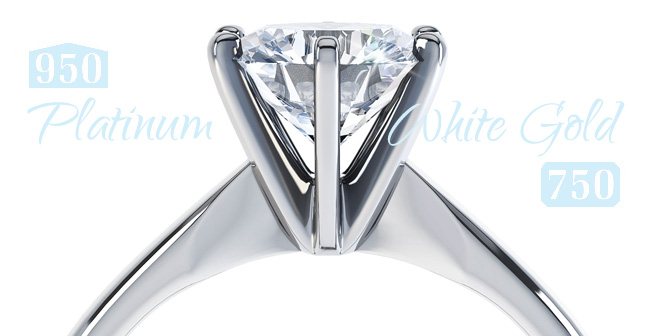
Platinum vs White Gold
Both Platinum and White Gold are popular choices for engagement rings. We create most engagement rings, working with Platinum or 18ct White Gold. As a result, many of our clients ask which is better. For this reason, we decided to give a little advice on Platinum vs White Gold.
What is Platinum? What is White Gold? The difference between each metal
Platinum and white gold vary in composition. Most jewellery consists of the element Gold or Platinum, combined with a proportion of alloys.
What is 999 Platinum?
999 represents the fineness of pure Platinum. Frequently purchased in Bullion or Coin form, investors choose Platinum as a store of value—an alternative to currency, stocks, shares and bonds.
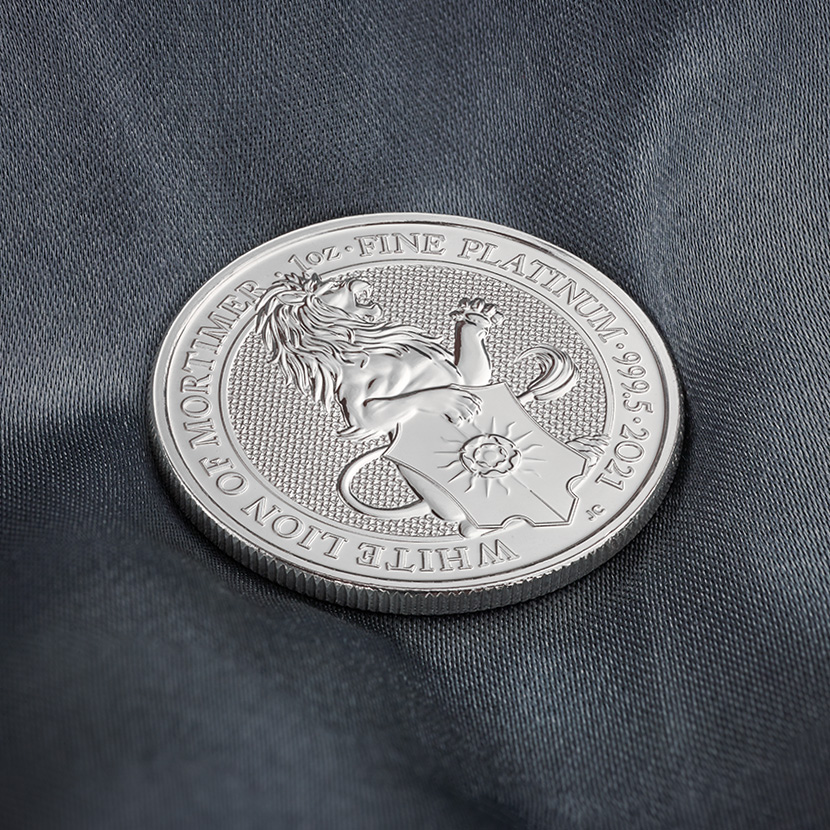
Example of 999 Platinum. 1oz coin. Photograph copyright (author)
Jewellery does not tend to be made in 999 Platinum. To explain, Platinum jewellery requires additional materials to harden the surface or to improve the flow of the molten metal during casting.
Chemical Composition of Platinum vs White Gold
When you look at metal composition, the differences between each alloy are striking. The following pie-charts are based upon 18ct Gold and Platinum for comparison. Most striking is the purity of Platinum. 950 Platinum is 95% pure, whereas 18ct White Gold (stamped 750) is 75% pure. Other metals add to the overall composition of both metals.
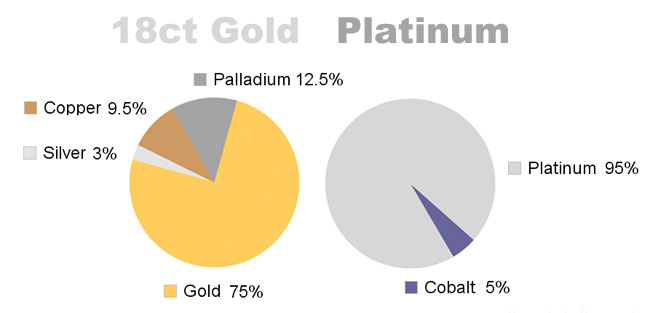
Typically Platinum alloys contain either Iridium or Cobalt. Platinum-Cobalt alloy, introduced over 20 years ago, saw production across European and Japanese markets. This alloy produces better castings, with fewer porosity issues, a smoother cast surface, better fluidity and a higher yield. This is favourable for both the manufacturer and end client. Since we cast most of our engagement rings, reduced porosity is advantageous. Porosity appears as small bubbles often invisible within the metal.
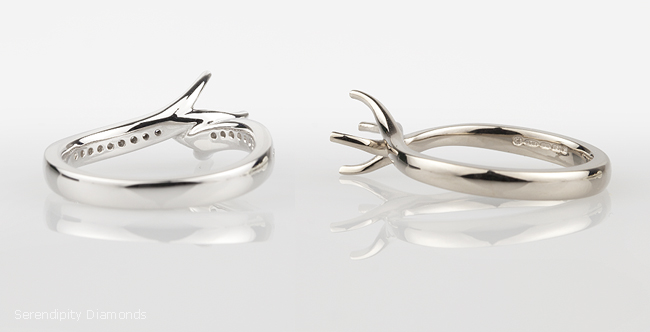
Showing 18ct White Gold (left) alongside the natural colour of unfinished 18ct White Gold (right)
Which is harder wearing? – Platinum or 18ct White Gold?
We consider two factors when it comes to the durability of Gold and Platinum.
1. Hardness (A metal’s ability to resist surface wear, dents, scrapes and scratches)
2. Malleability (how easy it is to bend the metal, and to shape it) Less malleable metals are more brittle.
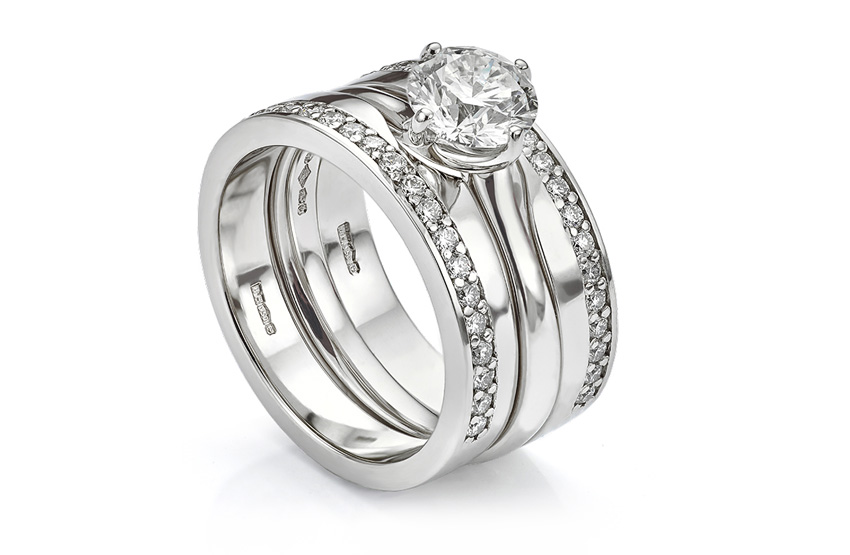
Platinum 3 ring set, mirror polished as part of a bespoke jewellery commission.
The hardness of Platinum vs White Gold
Platinum is less hard than 18ct White Gold. Platinum picks up scratches more easily. It is however less malleable, making it ideal for setting diamonds. The more rigid nature of Platinum makes it a more secure setting for gemstones. It is more difficult to bend out of shape. 18ct Gold, on the other hand, scratches less easily because the metal is harder. Platinum is a denser metal than 18ct White Gold. It will lose less metal over years of wear than 18ct Gold, but both metals are extremely hard-wearing. Furthermore, Platinum re-polished back to the original mirror surface with expert re-finishing.
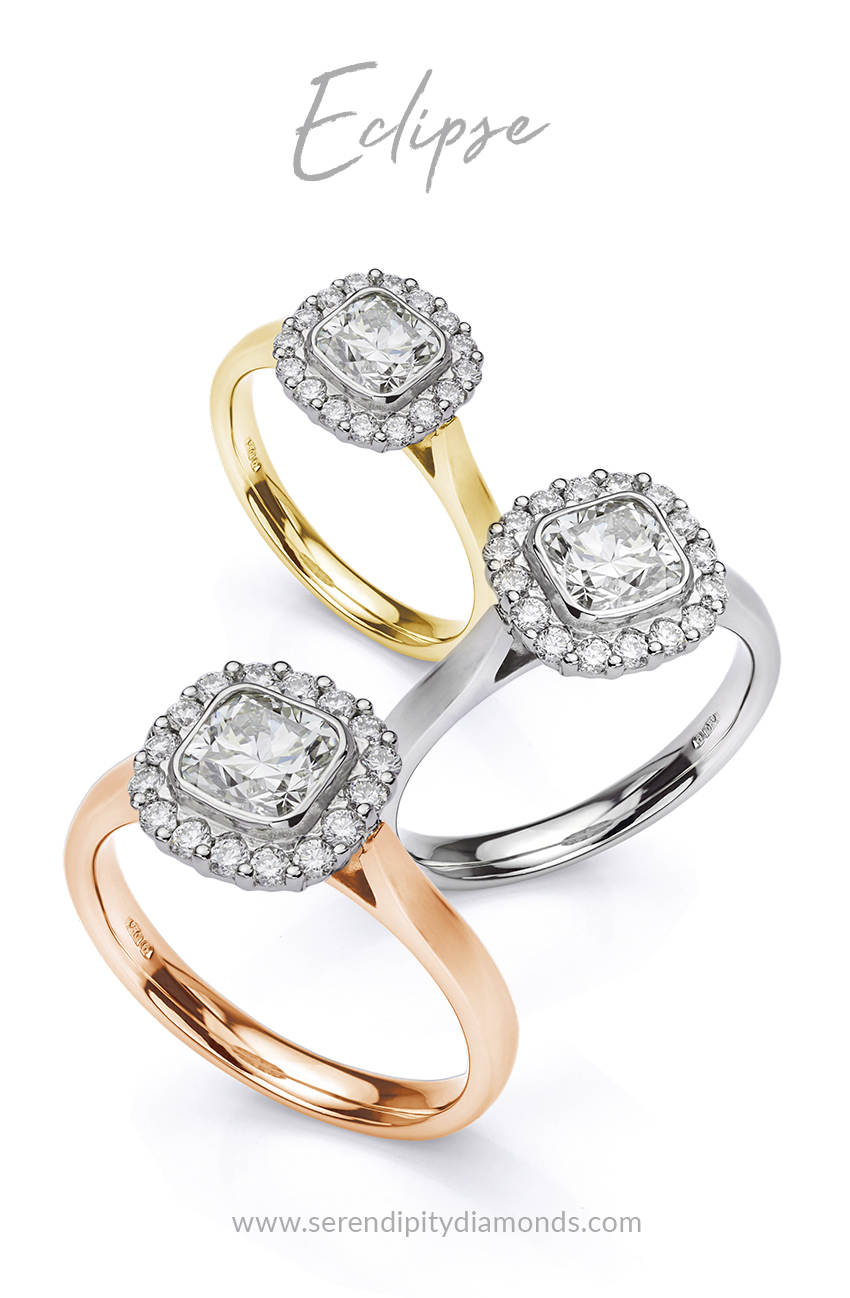
Three different versions of 18ct Gold – Yellow, White and Rose shown from above. Style shown – Eclipse available in most precious metals.
The malleability of Platinum vs 18ct White Gold
Owing to the hardness of 18ct White Gold, and the lower malleability of Platinum, there is a fourth metal choice available. Combining an 18ct Yellow Gold band with a Platinum setting works very well. This dual combination offers natural colouration, with the benefits of both metal choices.
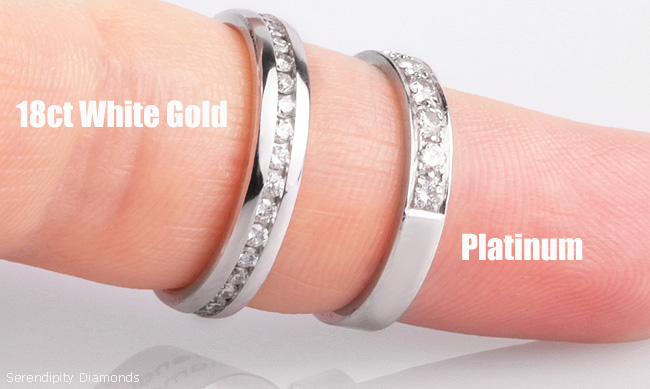
What makes 18ct White Gold White?
Surprisingly, 18ct White Gold is not actually white! The natural colour of White Gold is off-white—almost straw-white. Most 18ct White Gold jewellery receives a plating of Rhodium to whiten the item. Most items of 18ct White Gold undergo this process once polished. As a result, the item of jewellery has a mirror-like surface. In contrast, it is the surface of Platinum itself which is mirror polished. For anyone interested in a precious metal immune to a change of colour, we recommend Platinum. Over time, 18ct White Gold loses its Rhodium due to wear. The underside of an engagement ring in 18ct White Gold, reveals the true colour of the metal over time.
Does Platinum suit some ring styles more than others?
True Antique engagement rings were typically made in Platinum. As a result, many buyers favour Platinum over White Gold for reproduction or for vintage-styled engagement rings. Many clients like to remain faithful to the traditional choices of precious metals. This is especially true when features including millgrain appear within the design.
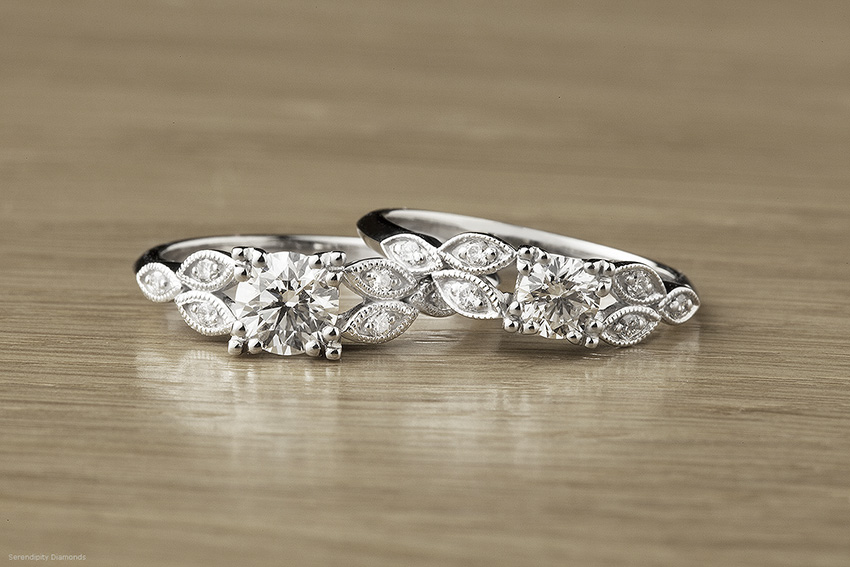
Showing the Fern engagement ring in 950 Platinum, with alternative diamond sizes.
Which setting types are more durable for engagement rings?
For durability (whether Platinum or White Gold) we recommend bezel settings, or designs featuring heavier claws. Bezel settings withstand heavy wear and re-polish very well. If you are at all heavy-handed or clumsy, avoid fine claws or delicate details regardless of whether you choose 950 Platinum or 18ct Gold for your wedding ring.
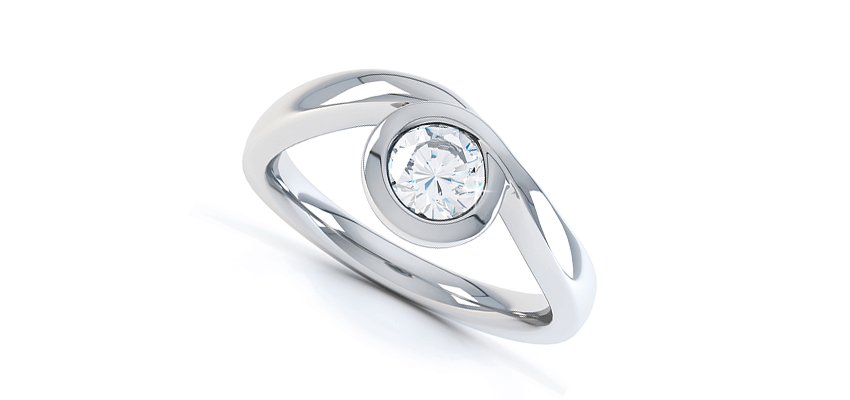
The Embrace engagement ring is durable in both White Gold and Platinum
Is Platinum better than Gold?
Many of our new clients ask us: “Is Platinum better than Gold?”
Platinum remains the precious metal of choice over Gold. But, only for clients favouring a white precious metal. Conversely, for clients favouring the warm, luxurious traditional colour of yellow gold, we advise 18ct Yellow Gold. We recommend both metals, but Platinum trumps Gold as a better choice owing to the retention of its natural grey-white colouration.
The post Platinum vs White Gold – Which is Harder Wearing for Jewellery? appeared first on Serendipity Diamonds Blog.
